The Cultural and Historical Story of Brazilian Coffee an introduction to the flavor and taste characteristics of Brazilian coffee bean bourbon varieties
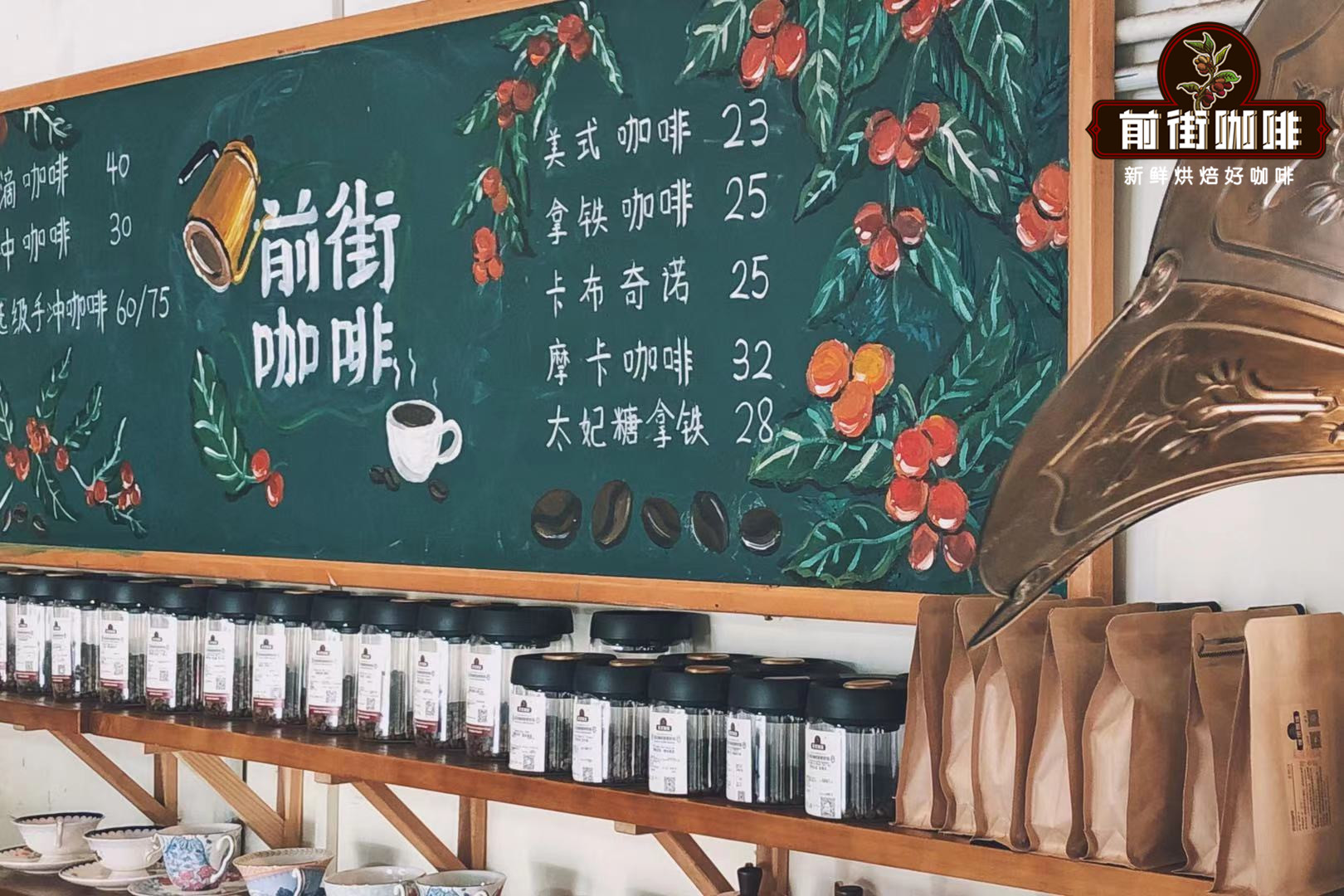
Professional coffee knowledge exchange more coffee bean information please follow the coffee workshop (Wechat official account cafe_style)
Before getting to the point, Qianjie Coffee will tell you a little bit about the history of the introduction of coffee into Brazilian coffee. It is well known that most of today's coffee is grown in Arabica. Coffee is believed by most people to have originated in Ethiopia; in the 6th-9th century, it was introduced to Arabica; in 1658, to Ceylon; in 1695, to India; in 1699, to Indonesia, in 1706, to the Netherlands; in 1714, to France; in 1722, French Guiana began to grow coffee; and in 1727, coffee finally appeared in Brazil.
Before 1727, there was not a single coffee tree on Brazilian soil. The reason why coffee trees can appear in Brazil and make Brazil the largest producer, there is also a story about "beauty tricks".
The inflection point was in 1727, when a Portuguese army officer stationed in Brazil, Lancesco Parreta, was sent to French Gaiana to mediate a territorial dispute between France and the Netherlands. At that time, coffee seedlings and seeds were not allowed to be taken abroad. This talented Portuguese army officer captured the heart of the then French governor of Gaiana and successfully brought coffee seeds to Brazil.
[producing area]
Brazilian coffee cultivation is mostly concentrated in the southeast of the country's map plate and is mainly composed of five states: Minas Gerais, Esp í rito Santo, Sao Paulo, Bahia and Parana.
Minas Gerais: the most important coffee producing state in Brazil. The area is fertile and high above sea level, making it suitable for growing Brazilian coffee, the country's most famous specialty. In the state of Minas Gerais, there are four main producing areas: Syrador, Chapada de Minas, Matas de Minas and southern Minas.
Espiritu Santo: this region is the second largest coffee growing area in Brazil and the largest producer of robusta beans. Montanias under the state is located on high ground with a mild climate and an average altitude of between 700m and 1000 m. These conditions enable farmers in the area to produce mid-range specialty coffee. The coffee grown here is fruity and highly acidic; further north, the Conilon Capixaba region is famous for growing Brazilian robusta coffee of the same name, which grows in lower elevations and smaller fields.
Sao Paulo: the port of Santos in the state of Sao Paulo is the country's main coffee export port. In addition, there are two areas under the state that grow high-quality coffee: Mojiana and the central region of S ã o Paulo. The beans from the Brazilian Queen's Manor in front street coffee come from Mojiana in the state of Sao Paulo.
Bahia: the state only started growing coffee in 1970. However, due to the use of high-quality beans and high-tech farming techniques, it has become popular, especially in the Cerrado and Planalto da Bahia areas of the state, where productivity is among the highest in the country. Most of the area is high above sea level, rainy in winter and dry in summer, so the coffee quality is sweet. 75% of the coffee grown here is Arabica.
Parana: the North Pioneiro (Norte Pioneiro) region is home to dense and productive coffee farms. Only Arabica coffee beans are grown here.
When a partner comes to the shop of Qianjie Coffee and asks for a cup of hand-brewed coffee that is neither sour nor bitter, Qianjie Coffee generally recommends to try beans from Brazil first, because Brazilian beans are low in acidity and nutty. Chocolate sweet and pure thickness is good, but slightly woody and earthy, flower and orange fragrance is not obvious. Generally speaking, Brazilian coffee is relatively light, it is not easy to drink the domineering sour and orange aroma of African bean wild, and it is not easy to drink the low fragrance and bitterness of Mantenin.
Qianjie Coffee now offers two varieties of Brazilian coffee beans, both of which are bourbon from Arabica.
[bourbon]
Bourbon species, native to Bourbon Island in the Indian Ocean (now known as Reunion Island), is the second species caused by the Typica mutation. It belongs to the oldest existing coffee variety. The green fruit appears bright red when ripe, while the yellow bourbon species is derived from the cross between bourbon species and other varieties. Because of its low yield and relatively intolerant to wind and rain, it has not been widely planted. But when planted at high altitudes, it will have excellent flavor performance.
Brazilian bourbon coffee is a hybrid between bourbon and other varieties. Because of its low yield and relatively intolerant to wind and rain, it has not been widely planted. However, when planted in high altitude areas, it will have excellent flavor performance, which is more common in recent years. Yellow Bourbon, Huang bourbon, the mature consequence is actually yellow, was first found in Brazil, and now mainly grows in Brazil. It is generally thought that it may have been mutated by a cross between a bourbon with red fruit and a variety of iron pickup with yellow fruit called "Amerelo de Botocatu".
Taste characteristics: sweet and smooth fruit sweetness, obvious nutty flavor, balanced and supple acidity, weak and clean bitterness, rich chocolate aroma and nutty flavor, bright and fresh taste.
[red bourbon]
Generally speaking, after the bourbon coffee trees blossom and bear fruit, the color change of coffee fruit is from green > to yellowish > to light orange > to mature red > to ripe dark red, so it is also called red bourbon, and its flavor will have better aroma, at the same time, the acid is brighter, and it even tastes like red wine. And according to Qianjie Coffee, it is known that Red bourbon is also the most widely cultivated variety in Brazilian coffee producing areas.
At present, the Brazilian rations beans in the Qianjie coffee shop use red bourbon varieties of coffee beans as the representative of the flavor of Brazilian coffee producing areas. Because red bourbon is not only the most productive variety of Brazilian coffee beans, but also the most primitive variety.
[Qianjie Coffee Brazilian Red Bourbon Coffee beans]
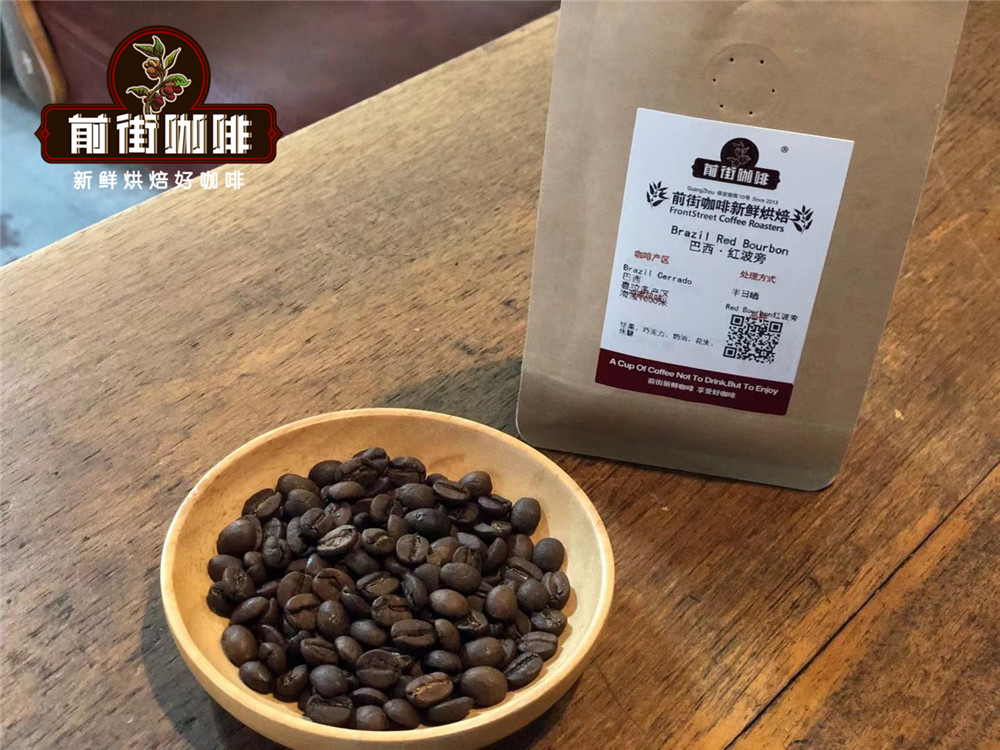
Country: Brazil
Producing area: South Minas
Altitude: 1000m
Variety: red bourbon
Treatment: half-sun
[yellow bourbon]
Bourbon is a gene mutant of bourbon. Bourbon has always been considered to be the leader in coffee because of its high yield and good quality. The yellow bourbon is a unique bourbon variety in the state of Sao Paulo, Brazil. After ripening, the coffee fruit does not turn red like red bourbon, but orange, so it is named after yellow bourbon. Because the altitude of yellow bourbon is very high, so its flavor is very good.
According to the Qianjie coffee cup, it is found that the yellow bourbon coffee beans grown at high altitudes will perform extremely well, and almost all of the top three prizes in the Brazilian extraordinary Cup Competition have been won by yellow bourbon coffee beans for two consecutive years, thus sweeping the boutique coffee industry.
The flavor of yellow bourbon usually has nuts and chocolate, the acidity is balanced and supple, the bitter feeling is weak and clean, and the whole is very bright and refreshing.
Among them, the variety of Brazilian Queen's Manor coffee beans introduced in the front street coffee shop is the yellow bourbon variety, which is no wonder its flavor is extremely sweet, the overall balance and mellow, supple taste.
[front Street Coffee, Queen of Brazil Coffee beans]
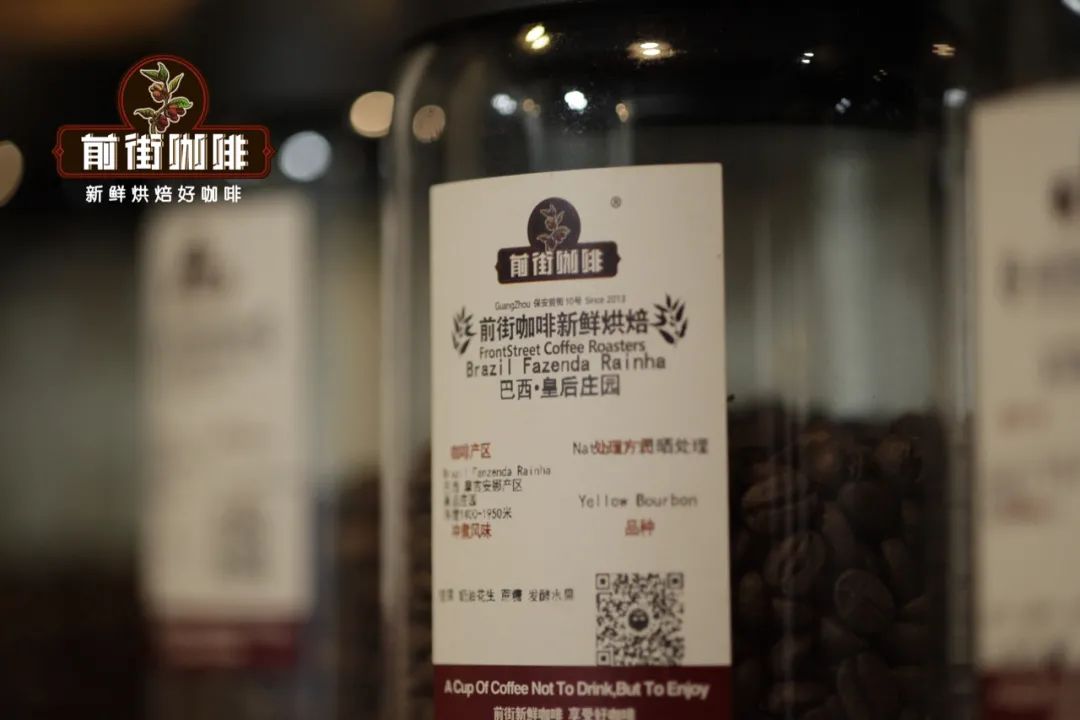
Country: Brazil
Producing area: Sao Paulo State (Queen's Manor)
Altitude: 1400-1950m
Variety: yellow bourbon
Treatment method: half sun / sun exposure
Qianjie recommended cooking parameters:
Take [Queen of Brazil] as an example.
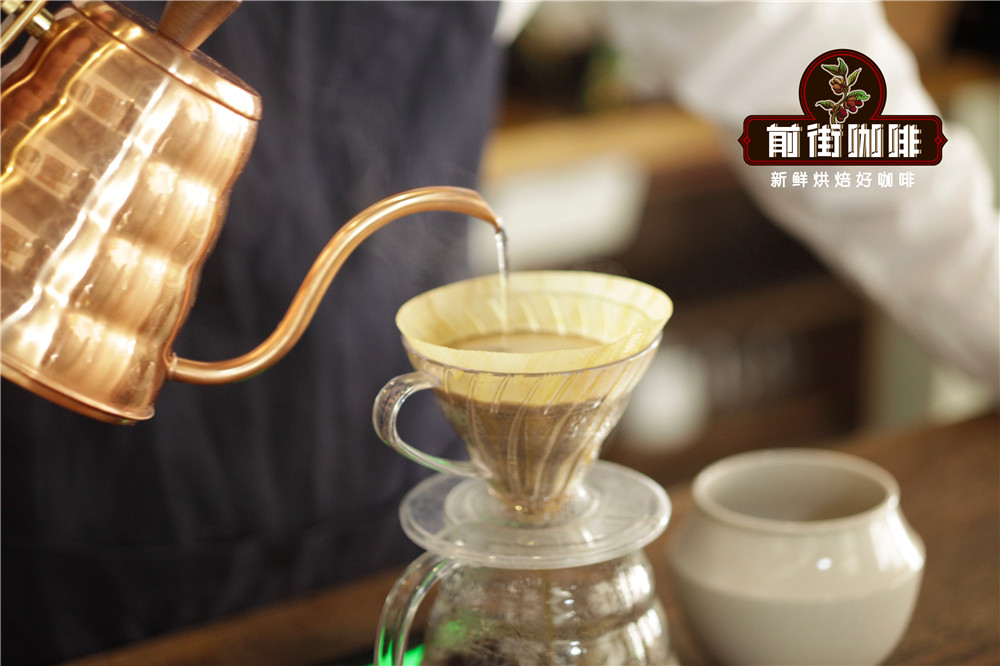
Hand punch: V60 filter cup small Fuji R440 grinding 3.5, water temperature about 88-90 degrees
The recommended grinding degree of normal pressure is 4 and the water temperature is 90 ℃.
The recommended siphon grinding degree is 4, and the water temperature is 90 ℃-91 ℃.
The recommended pressure grinding degree of the Philharmonic is 3.5, and the water temperature is 87-89 ℃.
Flavor: nuts, creamy peanuts, milk chocolate, creamy fragrance, sucrose sweet

For more boutique coffee beans, please add private Qianjie coffee on Wechat. WeChat account: kaixinguoguo0925
Important Notice :
前街咖啡 FrontStreet Coffee has moved to new addredd:
FrontStreet Coffee Address: 315,Donghua East Road,GuangZhou
Tel:020 38364473
- Prev
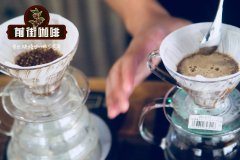
How to make coffee by hand? The skill of making coffee by hand.
Professional coffee knowledge exchange more coffee bean information please follow the coffee workshop (Wechat official account cafe_style) first please prepare 30 grams of freshly ground individual coffee powder and 350c.c about 93 degrees hot water. The first key point is to accurately measure the weight of individual coffee beans. The second point is that it is proposed to add water in four stages. Step 1: put the filter paper into the filter cup first.
- Next
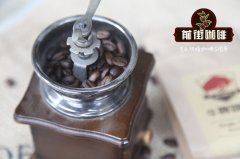
Guatemala single Coffee beans Cascagill Manor Kaddura washed SHB Rainforest Alliance certification
Professional coffee knowledge exchange more coffee bean information please follow the coffee workshop (Wechat official account cafe_style) Guatemala individual coffee beans Cascagill Manor Kaddura washed SHB Rainforest Union certification what are the flavor and taste characteristics? The Finca El Cascajal estate in the New Oriente region of Guatemala mainly cultivates the Catuai variety of raw coffee beans. To protect the environment
Related
- Detailed explanation of Jadeite planting Land in Panamanian Jadeite Manor introduction to the grading system of Jadeite competitive bidding, Red bid, Green bid and Rose Summer
- Story of Coffee planting in Brenka region of Costa Rica Stonehenge Manor anaerobic heavy honey treatment of flavor mouth
- What's on the barrel of Blue Mountain Coffee beans?
- Can American coffee also pull flowers? How to use hot American style to pull out a good-looking pattern?
- Can you make a cold extract with coffee beans? What is the right proportion for cold-extracted coffee formula?
- Indonesian PWN Gold Mandrine Coffee Origin Features Flavor How to Chong? Mandolin coffee is American.
- A brief introduction to the flavor characteristics of Brazilian yellow bourbon coffee beans
- What is the effect of different water quality on the flavor of cold-extracted coffee? What kind of water is best for brewing coffee?
- Why do you think of Rose Summer whenever you mention Panamanian coffee?
- Introduction to the characteristics of authentic blue mountain coffee bean producing areas? What is the CIB Coffee Authority in Jamaica?

